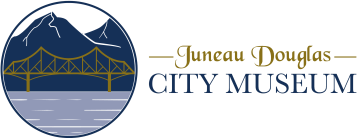Digital Bob Archive
Fish Hatchery at Juneau, 1919-1923
Days Of Yore
- 09/13/1986
Juneau's first fish hatchery, operated by the Alaska Fish and Game Club, was on South Franklin Street; the second hatchery was on Third Street, just west of Main, and was operated by the Territory of Alaska. After the fiasco of 1917, related last week, the 1919 Territorial Legislature enacted a new law.
The appropriation was the same as in 1917, $80,000, but there was a stipulation that \"the propagation of hump-back or pink salmon shall be the principal function of the hatchery.\" There also was much more emphasis on the protection and care of natural spawning grounds and on fishery research than there had been in the 1917 bill. The new law also provided for five instead of three members of the Territorial Fish Commission.
Governor Thomas Riggs chaired the new Fish Commission and the other members were C.D. Garfield of Juneau, John R. Beegle of Ketchikan, A.J. Adams of Cordova and Hugh Dougherty of Seward. A.J. Sprague of Juneau, who had been instrumental in getting the Fish and Game Club hatchery started, was hired as superintendent.
The equipment owned by the Fish and Game Club was purchased for $275, the amount of the club's debts resulting from hatchery operation. The equipment was installed in the swimming pool of the Arctic Brotherhood Hall, at the Third Street end of the present Alaska Office Building. It had been built in 1915 by the then very active Arctic Brotherhood, with Juneau's first swimming pool in its basement. The pool was not a financial success and was closed by the summer of 1919 when the Fish Commission rented it for $50 a month. The Juneau Water Company and the Alaska Electric Light & Power Company contributed water and power for the project.
In addition to the actual hatchery tanks, Sprague installed a number of aquariums in the building and stocked them with various species of trout and at times with salmon fry in various stages of development. The aquariums proved to be a great attraction for both residents and visitors.
Salmon fry and eyed eggs from the Juneau hatchery were planted in streams on Baranof, Admiralty and Douglas Islands, on the mainland near Juneau, and in some lakes. Sprague proved to be a competent and imaginative hatchery technician but a poor manager and administrator and was let go at the end of the year 1921.
The last plant of fry from the Juneau hatchery was made in the Juneau area on April 1, 1923. The hatchery was then closed and the equipment packed up and shipped to Ketchikan where a hatchery was built on Ketchikan Creek especially for the propagation of pink salmon.
Sprague continued to do some hatchery work on his own here in Juneau, but some 50 years would pass before this area saw another full scale fish hatchery.
